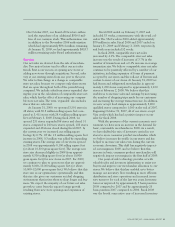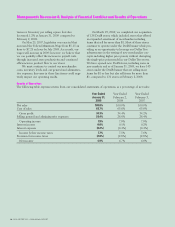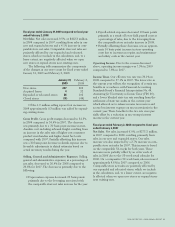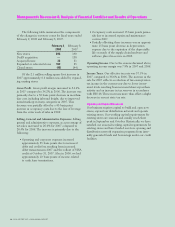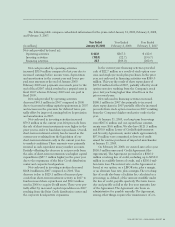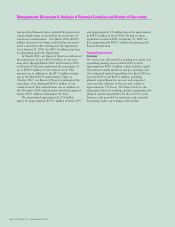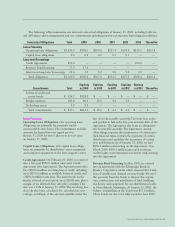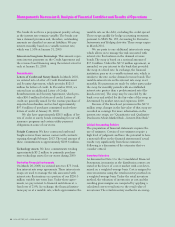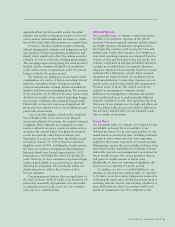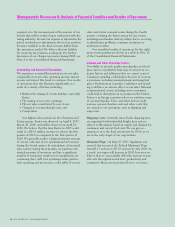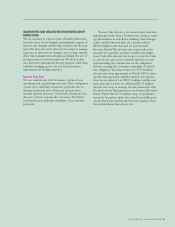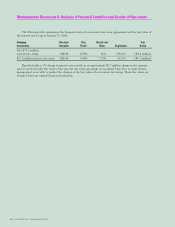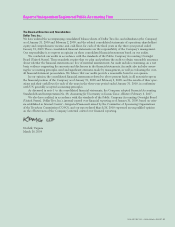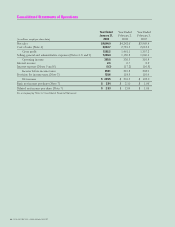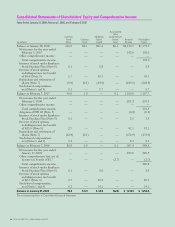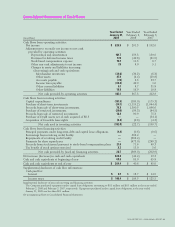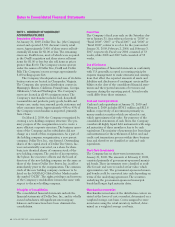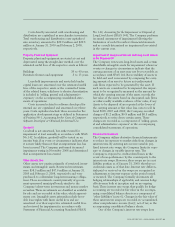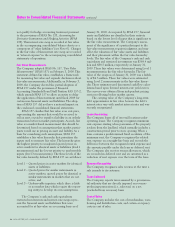Dollar Tree 2008 Annual Report Download - page 27
Download and view the complete annual report
Please find page 27 of the 2008 Dollar Tree annual report below. You can navigate through the pages in the report by either clicking on the pages listed below, or by using the keyword search tool below to find specific information within the annual report.
DOLLAR TREE, INC. • 2008 ANNUAL REPORT
25
QUANTITATIVE AND QUALITATIVE DISCLOSURES ABOUT
MARKET RISK
We are exposed to various types of market risk in the
normal course of our business, including the impact of
interest rate changes and foreign currency rate fluctua-
tions. We may enter into interest rate swaps to manage
exposure to interest rate changes, and we may employ
other risk management strategies, including the use of
foreign currency forward contracts. We do not enter
into derivative instruments for any purpose other than
cash flow hedging and we do not hold derivative
instruments for trading purposes.
Interest Rate Risk
We use variable-rate debt to finance certain of our
operations and capital improvements. These obligations
expose us to variability in interest payments due to
changes in interest rates. If interest rates increase,
interest expense increases. Conversely, if interest rates
decrease, interest expense also decreases. We believe
it is beneficial to limit the variability of our interest
payments.
To meet this objective, we entered into derivative
instruments in the form of interest rate swaps to man-
age fluctuations in cash flows resulting from changes
in the variable-interest rates on a portion of our
$250.0 million term loan and on our Demand
Revenue Bonds. The interest rate swaps reduce the
interest rate exposure on these variable-rate obliga-
tions. Under the interest rate swaps, we pay the bank
at a fixed-rate and receive variable-interest at a rate
approximating the variable-rate on the obligation,
thereby creating the economic equivalent of a fixed-
rate obligation. We entered into two $75.0 million
interest rate swap agreements in March 2008 to man-
age the risk associated with the interest rate fluctua-
tions on a portion of our $250.0 million variable rate
term loan and we have an additional $17.6 million
interest rate swap to manage the risk associated with
the interest rate fluctuations on our Demand Revenue
Bonds. Under this $17.6 million swap, no payments
are made by parties under the swap for monthly peri-
ods in which the variable-interest rate is greater than
the predetermined knock-out rate.


